Preserving Wildlife at Disney Lookout Cay at Lighthouse Point
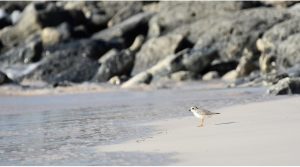
Environmental Sustainability
June 10, 2024
Disney Lookout Cay at Lighthouse Point is Disney Cruise Line’s new destination set in the rich culture and natural beauty of The Bahamas and is an island full of unique native animal and plant species. Walt Disney Imagineers worked for many years alongside Disney’s Animals, Science and Environment (ASE) team and local conservation experts to ensure nature can continue to thrive at this one-of-a-kind tropical retreat.
At Disney Lookout Cay, Disney continues our long-standing commitment to protecting the natural beauty of The Bahamas – which has also included more than 80 grants provided through the Disney Conservation Fund to nonprofit organizations working with communities locally to protect nature over the past 25 years. As guests begin to explore this beautiful location, here are five types of wildlife whose stories you should know.
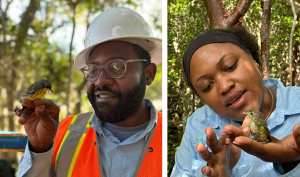
1. Over 100 Dazzling Bird Species
Disney Lookout Cay is home to more than 100 dazzling bird species, including the Kirtland’s warbler in the photo on the left and the thick-billed vireo on the right, both perched on the hands of Disney’s two Bahamian conservation managers Bradley and Pachancia. Guests will also want to keep an eye out for the gray and white piping plovers dotting the shoreline – which some may recognize the relatives of these birds in the Disney Pixar animated short, “Piper.”
Disney’s ASE team started a bird monitoring program to help identify where the island’s resident flyers call home, and the destination was thoughtfully designed to avoid these sensitive areas. The team continues to monitor the island’s bird species through a tagging and tracking program to help protect these feathered friends.
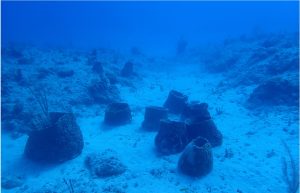
2. Barrel Sponges Towering from the Ocean Floor
Nearly 50 giant barrel sponges were found off the coast of Disney Lookout Cay. These important invertebrates are the largest species of water-filtering sponge and are sometimes called “Redwoods of the Reef” due to their size and long lifespans.
To preserve these sponges along with corals and other marine habitats, Disney designed an innovative open-trestle pier that extends into deep waters. Designing the pier with its long, slender stilts helped to avoid dredging the ocean floor to build a dock for Disney Cruise Line’s ships. For the few giant barrel sponges that fell within the pier’s footprint, we relocated them using a groundbreaking method with the help of EPCOT’s costuming team, who designed the innovative mesh carrier seen above. Initial results show the relocated sponges have taken root and are expected to thrive.
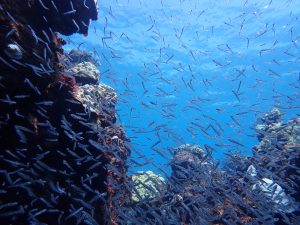
3. Fish and Other Marine Life Swimming Offshore
The waters off Disney Lookout Cay are teeming with marine life, including 74 species of fish and more than 60 other species identified so far. Guests will be able to spot silversides like the ones pictured above as well as Nassau grouper, parrot fish and blue tangs swimming just offshore.
To help these fish and other sea creatures swim around Lighthouse Point, we added some special features under our open-trestle pier. By repurposing 30 limestone boulders already on the site, we built artificial reefs to establish an underwater “fish highway.” These structures provide fish and other marine species a natural shelter so they can move safely through the pier’s support legs.
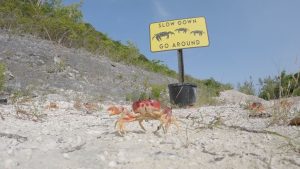
4. Land Crabs Scurrying Across the Sand
Land crabs are important to the Bahamian way of life, and there are plenty of them scurrying across the sand or on walkways at Disney Lookout Cay including the ghost crab, black crab or the black-backed crab like the ones pictured above.
Since these crabs are abundant and important residents of the island, Disney’s ASE team has been tagging them and tracking their natural behaviors to learn more about them in one of the first studies of this kind in The Bahamas!
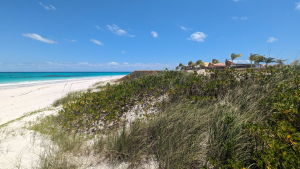
5. Diversity of Native Plants Growing Across the Island
Disney Lookout Cay has a rich and diverse plant life as home to nearly 200 species of plants including dense evergreen forests, open-water ponds, mangroves and more. The shrub-filled sand dunes in the photo above act as an important animal habitat and help maintain the island’s natural shoreline.
To preserve the native vegetation, we’ve intentionally only developed less than 16% of the land – much of it for low-density uses like beach chairs, umbrellas and small support structures. For the areas we developed, Disney Imagineers relied on elevated walkways and structures that help reduce impacts to the natural environment.
Disney Planet Possible at Work
Disney’s Animals, Science and Environment team collaborated with many others from Disney Cruise Line, Walt Disney Imagineering and local organizations in The Bahamas to design and build this destination where guests can enjoy the natural beauty Eleuthera has to offer.
This is just one example of how we are taking meaningful and measurable action to protect nature and support a healthier planet for people and wildlife. We call our collective efforts Disney Planet Possible – and we continue to collaborate on initiatives like this globally to help inspire optimism for a brighter, more sustainable future. Learn more at disney.com/environment.
